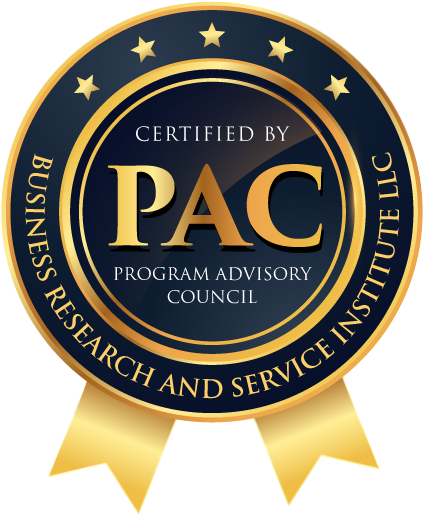In today’s global marketplace, efficient supply chain management is essential for businesses to thrive. While traditional logistics focuses on the movement of goods from manufacturers to consumers, reverse logistics deals with the opposite flow. In this article, we will explore the concept of reverse logistics, and its significance in the industry, and take a look at the emerging idea of circular supply chain.
What is Reverse Logistics?
Reverse logistics refers to managing the flow of products or materials from their final destination back to their origin or other designated locations for various purposes, such as returns, repairs, recycling, or disposal. It involves the reverse movement of goods through the supply chain, in contrast to the traditional forward movement.
The Importance of Reverse Logistics
Reverse logistics plays a crucial role in several industries, including e-commerce, retail, manufacturing, and healthcare. It enables businesses to handle product returns, reduce waste, and recover value from products that have reached the end of their lifecycle. By effectively managing reverse logistics, companies can enhance customer satisfaction, reduce costs, and improve overall supply chain efficiency.
Critical Components of Reverse Logistics
Reverse logistics encompasses various processes and activities, including:
Product Returns Management
Efficient handling of product returns is a critical aspect of reverse logistics. It involves streamlining the return authorization process, evaluating returned products for possible resale or refurbishment, and managing customer refunds or exchanges.
Repair and Refurbishment
Reverse logistics also involves repairing and refurbishing returned or defective products. This process ensures that items can be restored to a saleable condition or reused, reducing waste and maximizing value recovery.
Recycling and Disposal
In cases where products cannot be repaired or refurbished, reverse logistics facilitates proper recycling or disposal. This helps companies comply with environmental regulations and minimize the impact of their operations on the environment.
Benefits of Implementing Reverse Logistics
Implementing effective reverse logistics processes can offer numerous benefits to businesses, including:
Cost Reduction: By optimizing the handling of returned products, companies can minimize transportation, warehousing, and inventory costs associated with reverse logistics.
Customer Satisfaction: Efficient product returns management enhances customer satisfaction by providing hassle-free returns, exchanges, or refunds, leading to increased loyalty and positive brand perception.
Sustainability: Reverse logistics promotes sustainable practices by enabling the recycling, refurbishment, or proper disposal of products, reducing waste, and minimizing the environmental impact.
Related: How to Reduce Costs in Supply Chain: 12 Proven Strategies
Challenges in Reverse Logistics
Despite its advantages, reverse logistics poses several challenges for businesses. Some common challenges include:
Complex Process: Reverse logistics involves multiple stakeholders, intricate processes, and coordination with different partners, making it more challenging than traditional logistics.
Inventory Management: Proper management of returned products requires effective inventory tracking, accurate evaluation, and appropriate storage facilities, which can be demanding for businesses.
Value Recovery: Maximizing value recovery from returned products necessitates efficient assessment, repair, and remarketing strategies, which may pose challenges for organizations.
Emerging Trends in Reverse Logistics
The field of reverse logistics is continuously evolving, driven by technological advancements and changing consumer expectations. Some emerging trends include:
Automation and Data Analytics: Businesses are increasingly leveraging automation and data analytics tools to streamline reverse logistics processes, enhance decision-making, and improve efficiency.
Enhanced Visibility: Real-time tracking and visibility of returned products provide valuable insights into the reverse logistics flow, enabling businesses to optimize operations and reduce costs.
Collaboration and Partnerships: Collaborative networks and partnerships among manufacturers, retailers, logistics providers, and recyclers are becoming more prevalent, facilitating seamless reverse logistics operations.
Circular Supply Chain: A Sustainable Approach
The circular supply chain is a concept rooted in sustainability that aims to minimize waste, maximize resource utilization, and promote a closed-loop system. It emphasizes the continuous reuse, refurbishment, and recycling of products, materials, and components throughout their lifecycle.
How Circular Supply Chain Supports Reverse Logistics
A circular supply chain complements reverse logistics by providing a framework for sustainable product recovery and reintroduction into the supply chain. It aligns with the principles of reverse logistics by promoting resource efficiency, reducing waste generation, and facilitating the responsible disposal of products.
Advantages of Circular Supply Chain
Implementing a circular supply chain approach offers several benefits, such as:
Resource Conservation: By reusing, refurbishing, and recycling products and materials, circular supply chain practices contribute to the conservation of valuable resources.
Reduced Environmental Impact: Circular supply chain models minimize waste generation, energy consumption, and greenhouse gas emissions, thereby reducing the environmental footprint.
Enhanced Resilience: Circular supply chains promote resilience by reducing reliance on scarce resources, minimizing supply chain disruptions, and fostering greater adaptability.
Challenges in Implementing Circular Supply Chain
Despite its potential advantages, implementing a circular supply chain can be challenging due to various factors, including:
Complex Reverse Logistics Infrastructure: Establishing efficient reverse logistics networks and infrastructure for collecting, sorting, and processing returned products is a significant challenge.
Stakeholder Collaboration: Successful implementation of circular supply chain practices requires collaboration and coordination among multiple stakeholders, including manufacturers, retailers, consumers, and recycling facilities.
Consumer Awareness and Behavior: Educating consumers about the importance of sustainable consumption and encouraging behavioral changes to support circularity presents a challenge for businesses.
The Future of Reverse Logistics and Circular Supply Chain
As sustainability becomes increasingly important in the business landscape, the role of reverse logistics and circular supply chains will continue to expand. The integration of advanced technologies, such as blockchain and artificial intelligence, will further enhance the efficiency and transparency of these processes. Companies that embrace reverse logistics and circular supply chain practices will gain a competitive edge, reduce costs, and contribute to a more sustainable future.
Conclusion
Reverse logistics and circular supply chains are integral components of modern-day supply chain management. By effectively managing the reverse flow of products and adopting sustainable practices, businesses can achieve cost savings, enhance customer satisfaction, and contribute to environmental preservation. Embracing these concepts is essential for companies seeking to thrive in a competitive and socially responsible marketplace.
FAQs (Frequently Asked Questions)
How does reverse logistics differ from traditional logistics?
Reverse logistics involves the movement of goods from the final destination back to their origin or other designated locations, while traditional logistics focuses on the forward flow of goods from manufacturers to consumers.
What are some benefits of implementing reverse logistics?
Implementing reverse logistics can lead to cost reduction, improved customer satisfaction, and sustainable practices through efficient product returns management, repairs, and recycling.
What is a circular supply chain?
A circular supply chain is a sustainable approach that emphasizes the continuous reuse, refurbishment, and recycling of products, materials, and components throughout their lifecycle.
How does a circular supply chain support reverse logistics?
A circular supply chain complements reverse logistics by promoting resource efficiency, reducing waste generation, and facilitating the responsible disposal of products.
What are some challenges in implementing circular supply chain practices?
Challenges in implementing circular supply chain practices include establishing efficient reverse logistics infrastructure, fostering stakeholder collaboration, and driving consumer awareness and behavioral changes.

Aftab Khan is a logistics specialist with over forty years of experience in all aspects of supply chain and logistics management. He is an engineer by training and holds an MBA, besides several certifications from APICS/ASCM, ISCEA, and BRASI. Mr. Khan is the Executive Director of Business Research and Service Institute LLC, USA.








